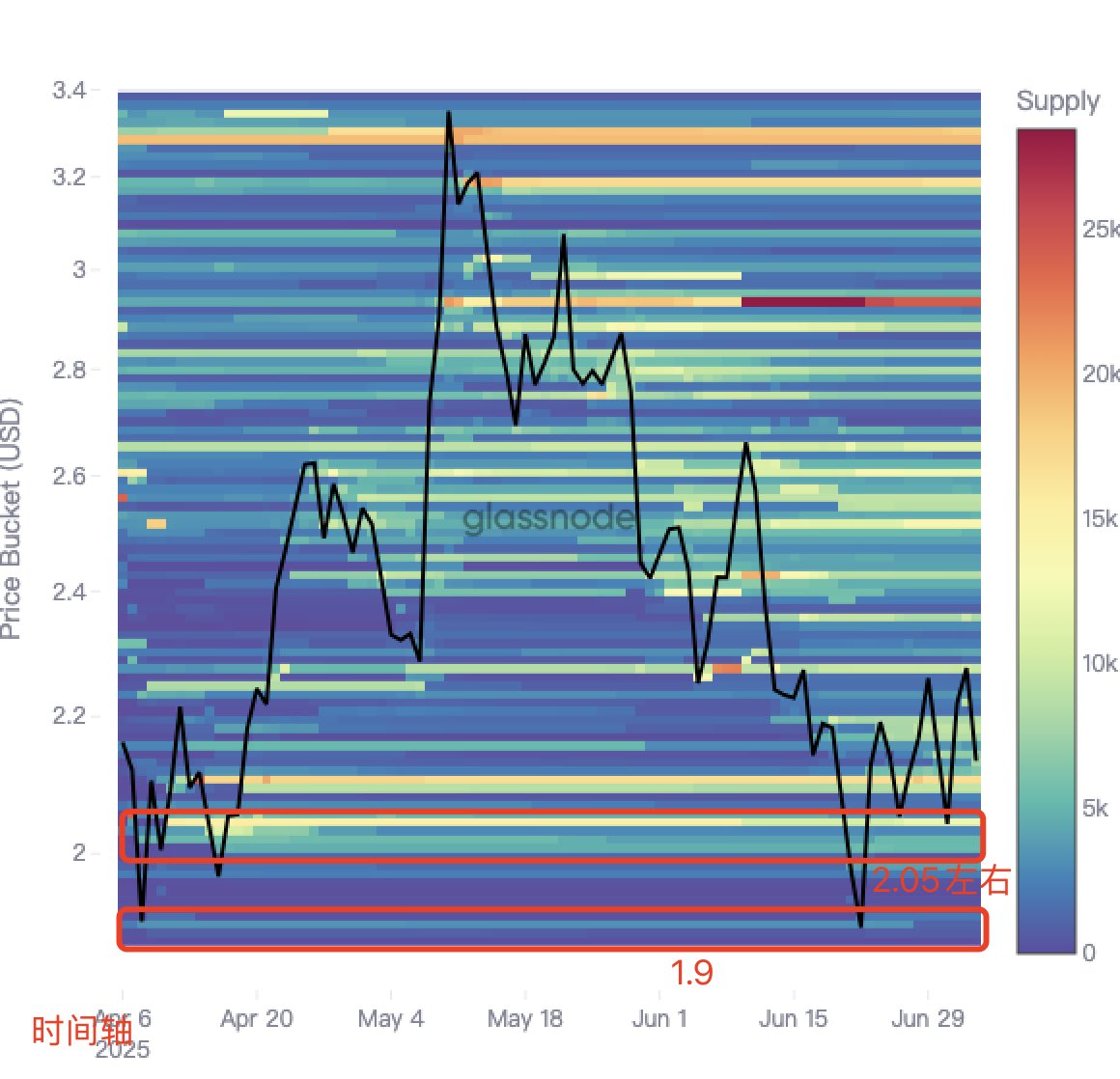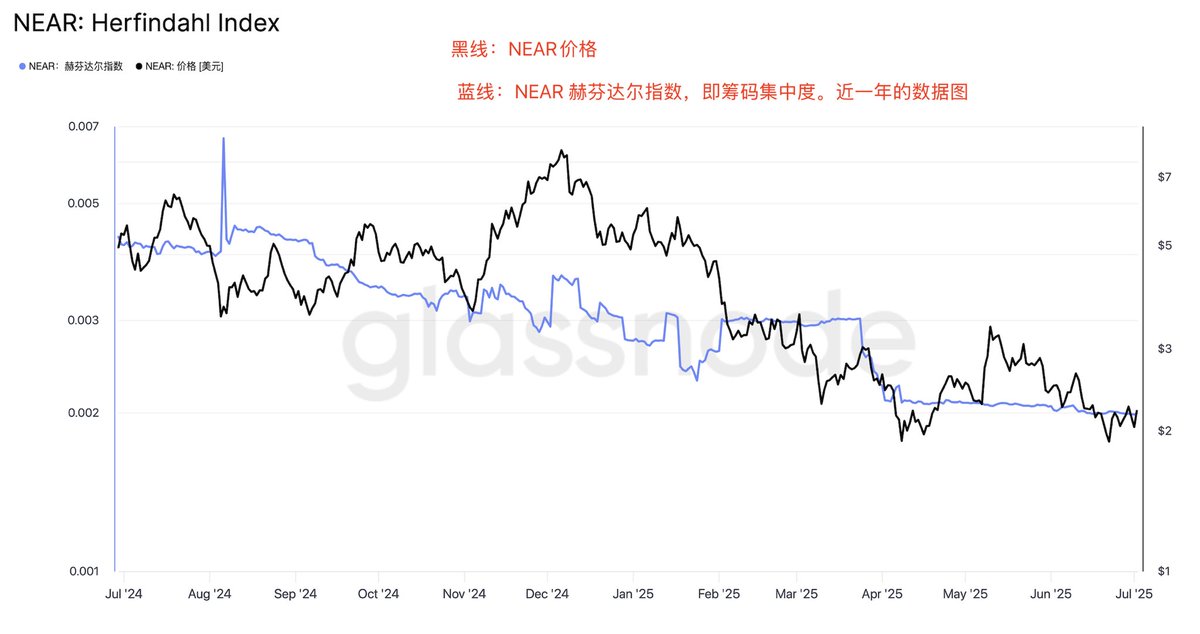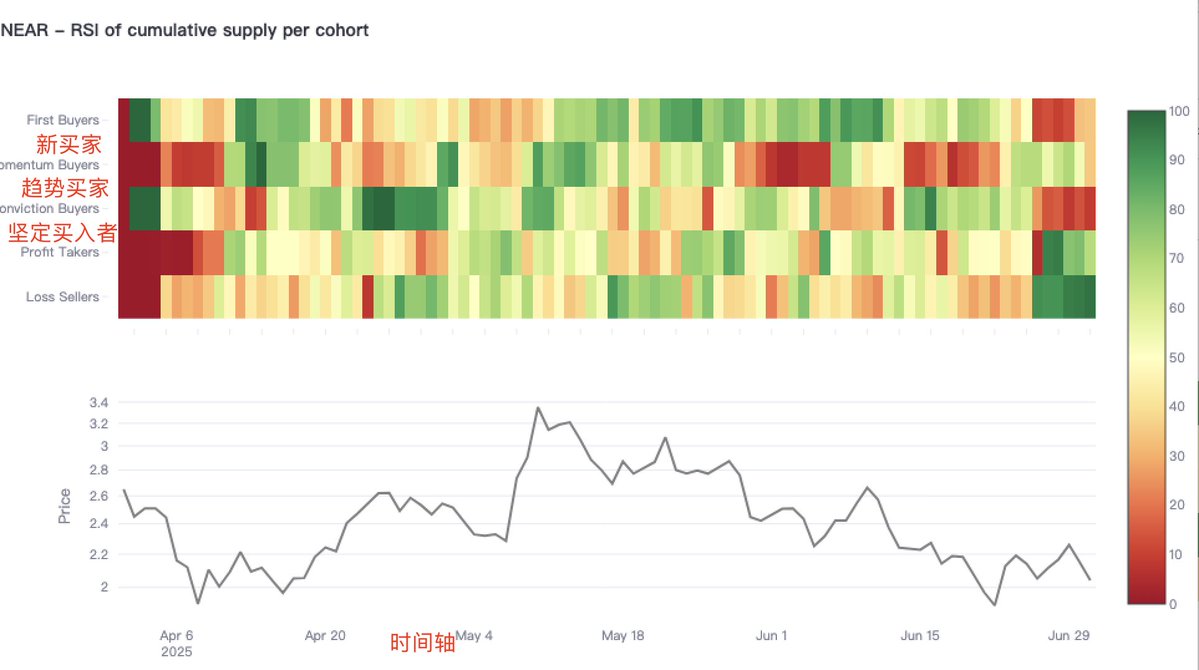NEAR's CBD data, Cost Basis Distribution data (CBD)
What is CBD? @NEARProtocol
Cost Basis Distribution (CBD) enables investors to do two key things:
Absolute Value (Key Cost Basis Levels): CBD reflects the total supply held by addresses with an average cost basis within a specific price range, as indicated by the z-value (color intensity) of the heatmap.
Dynamic Time Series: The time series view allows you to see how the token supply acquired at different price levels is redistributed as future prices change.
The Cost Basis Distribution (CBD) heatmap visually presents the supply density at different price levels over a specific time period (e.g., 1 month, 1 year).
After selecting a time range, this indicator will display a heatmap where the y-axis represents the logarithmic scale of cost basis, set to range from 1% below the lowest price to 1% above the highest price within the selected time period. The color intensity of each pixel reflects the concentration of supply at that price level, allowing investors to identify where significant portions of asset supply come from.
Clearly shows the trend of how the cost basis of chips changes over time. Unlike analyzing UTXO-based URPD data, CBD calculates the average cost basis for each address, better representing the overall behavior of holders.
@NEARProtocol CBD is shown in the figure. It is recommended to compare the trend with the overall market trend and pay attention to the project's operational situation. For reference and learning, thank you all.
@NEARProtocol @KaitoAI

NEAR Concentration Index and RSI Data Update
The trend of the concentration index over the past year and the RSI data chart, with the trend chart from April to now. @NEARProtocol
@NEARProtocol The Herfindahl index measures the proportion of addresses in the current supply, defined as the weighted total of address balances in the network. A high score indicates a high concentration of supply, while a low score indicates a more even distribution of funds across addresses.
@NEARProtocol The cumulative supply of each queue helps identify when specific groups are heating up or cooling down. Green values indicate increasing activity, while red values indicate slowing or stagnating activity.
As shown in the figure below, for reference and learning, thank you all.


6.67K
66
The content on this page is provided by third parties. Unless otherwise stated, OKX is not the author of the cited article(s) and does not claim any copyright in the materials. The content is provided for informational purposes only and does not represent the views of OKX. It is not intended to be an endorsement of any kind and should not be considered investment advice or a solicitation to buy or sell digital assets. To the extent generative AI is utilized to provide summaries or other information, such AI generated content may be inaccurate or inconsistent. Please read the linked article for more details and information. OKX is not responsible for content hosted on third party sites. Digital asset holdings, including stablecoins and NFTs, involve a high degree of risk and can fluctuate greatly. You should carefully consider whether trading or holding digital assets is suitable for you in light of your financial condition.

